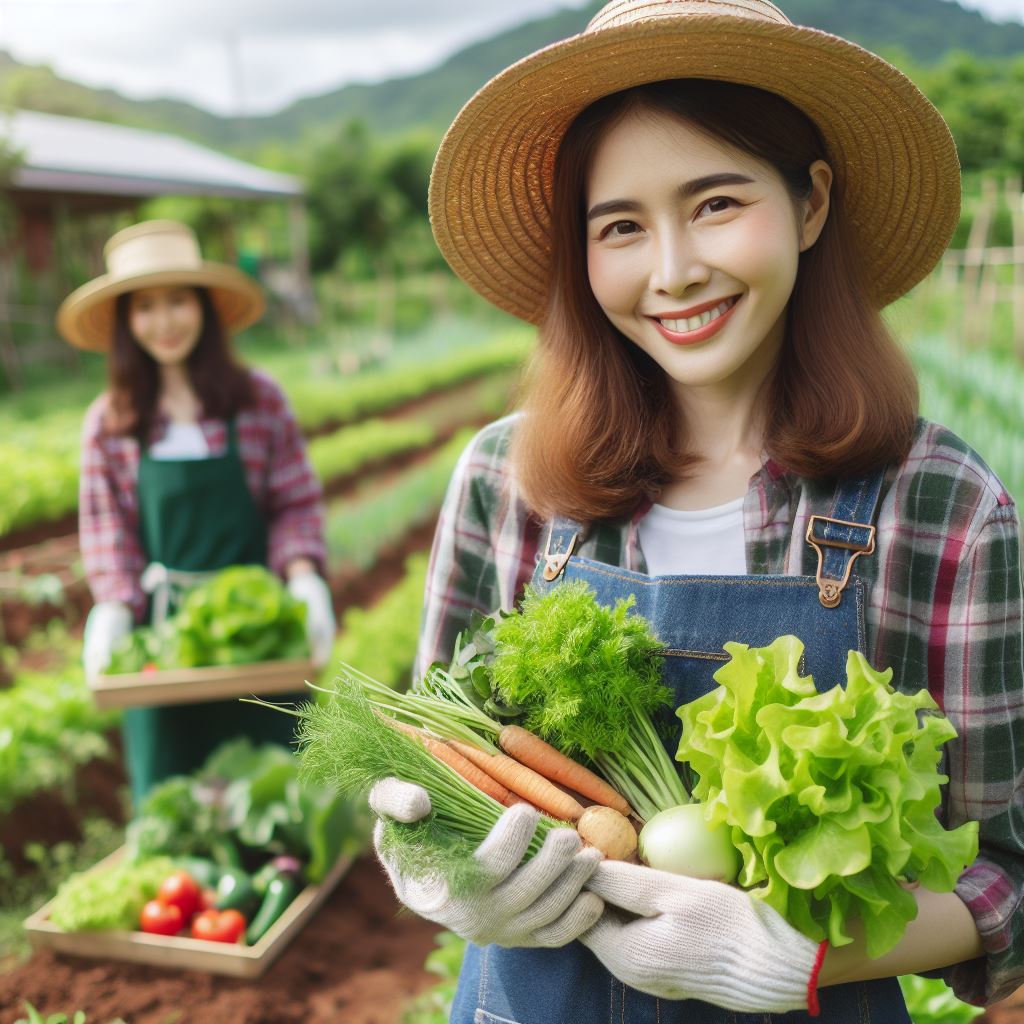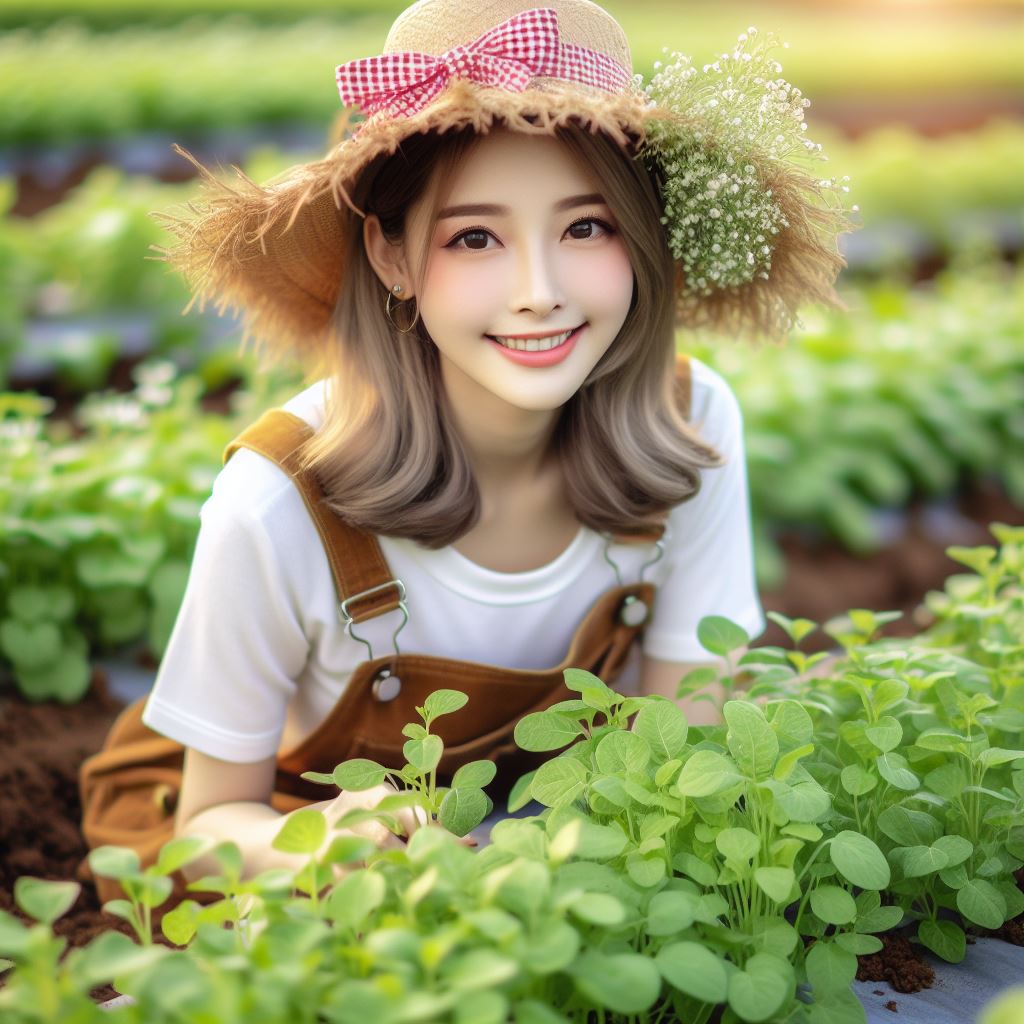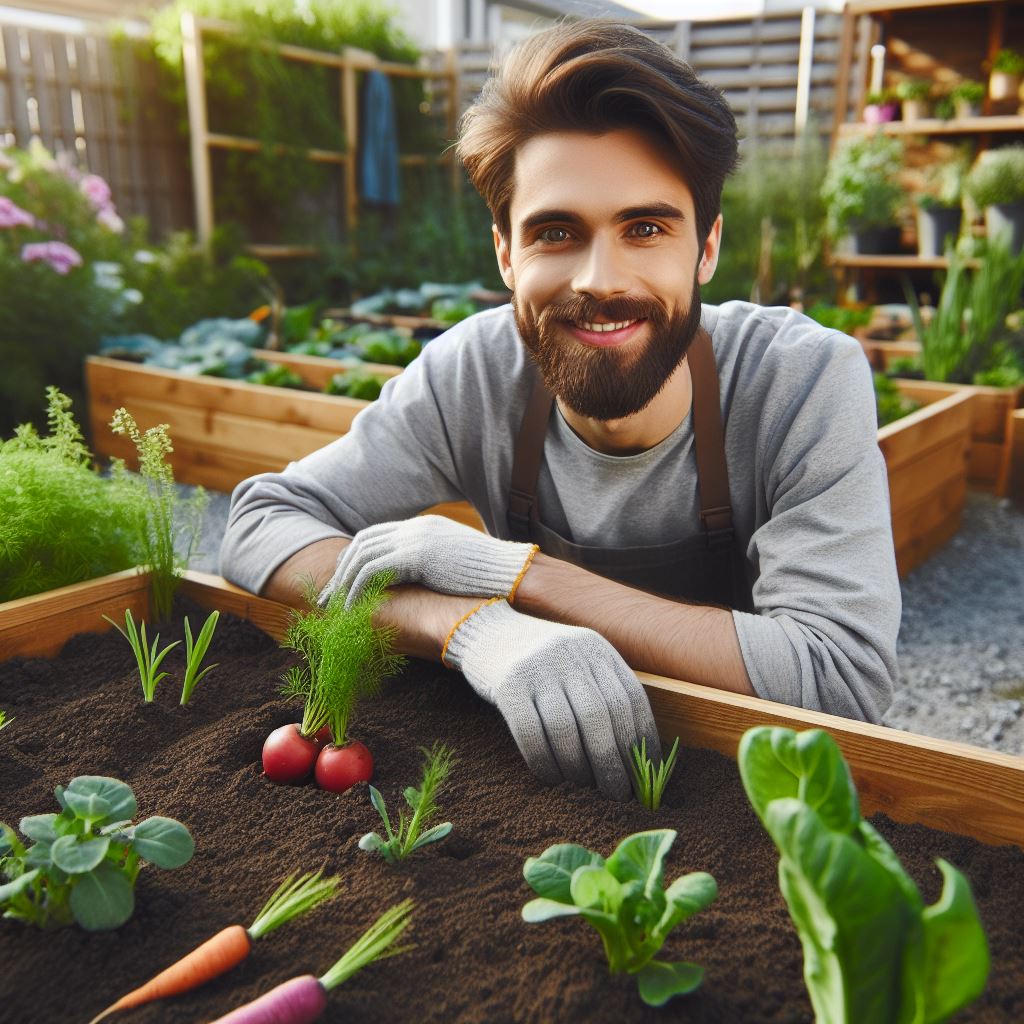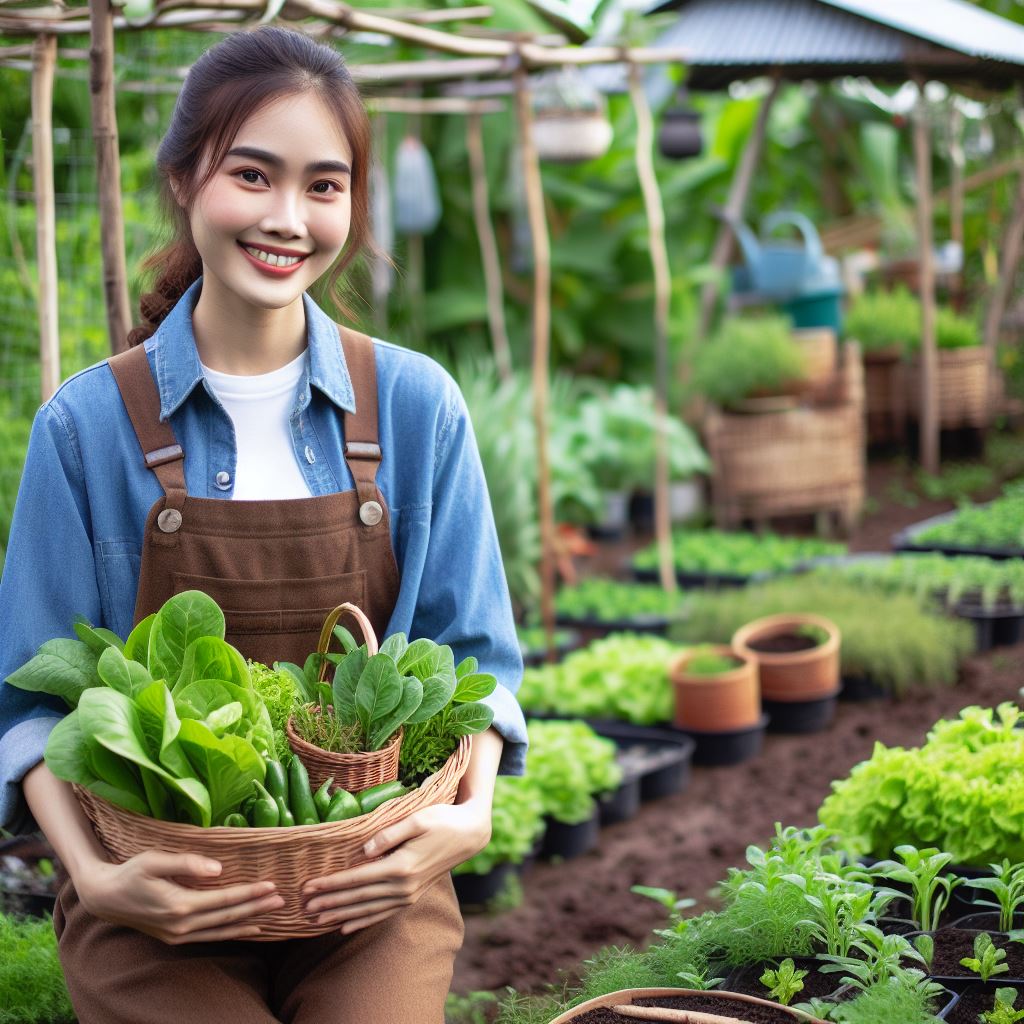Introduction
In this blog post, we will discuss small garden vegetable tips to help you maximize your space and grow vegetables at home.
A small garden may pose challenges, but it is still possible to have a bountiful harvest.
A. Importance of maximizing space in small gardens
Maximizing space in a small garden is crucial as every square inch counts.
By using vertical gardening techniques such as trellises and hanging baskets, you can grow more produce in a limited area.
Creating raised beds or using containers can also help make the most of available space.
B. Benefits of growing vegetables at home
Growing vegetables at home provides numerous benefits, including access to fresh, organic produce.
You can save money on groceries and make healthier choices for you and your family.
Homegrown vegetables offer superior taste and nutritional value compared to store-bought options.
With careful planning, you can grow a wide variety of vegetables even in a small garden.
Choose compact and dwarf varieties that are suitable for small spaces.
Consider succession planting to maximize your yields throughout the growing season.
Proper spacing and pruning techniques can also optimize growth and prevent overcrowding.
Implementing companion planting can help deter pests and promote healthier plants.
Regular watering, fertilizing, and pest management are essential for a successful small garden harvest.
In essence, small gardens present unique opportunities to grow your own vegetables.
Transform Your Agribusiness
Unlock your farm's potential with expert advice tailored to your needs. Get actionable steps that drive real results.
Get StartedBy maximizing space, choosing the right varieties, and implementing proper gardening techniques, you can enjoy a big harvest right at home.
Choosing the Right Vegetables for a Small Garden
A. Researching vegetable varieties that thrive in small spaces
Choosing the right vegetables for a small garden can be a challenging task.
Here are some tips to help you make the best choices:
- Tomatoes: Consider growing compact varieties such as cherry tomatoes or determinate types that don’t require staking.
- Peppers: Look for dwarf or patio varieties that are bred specifically for container gardening.
- Lettuce: Opt for loose-leaf lettuce varieties that can be harvested gradually, allowing you to maximize space.
- Radishes: These fast-growing root vegetables are perfect for small gardens and can be intercropped with other plants.
- Herbs: Choose compact herbs like basil, thyme, and parsley that can thrive in containers or small garden beds.
- Carrots: Consider growing baby carrots or varieties that are designed for shallow soil to make the most of limited space.
- Beans: Bush beans are a great choice for small gardens as they don’t require trellising and have a smaller footprint.
Remember to check the specific growing requirements for each vegetable variety to ensure success in your small garden.
B. Consideration of personal preferences and family needs
When choosing vegetables for your small garden, it’s essential to consider your personal preferences and family needs.
Here are some factors to keep in mind:
1. Taste preferences
Decide which vegetables you and your family enjoy the most.
Growing vegetables you love will ensure a bountiful harvest and inspire you to tend to your garden.
2. Nutritional needs
Consider the nutritional value of the vegetables you want to grow and select a variety that will meet your family’s dietary requirements.
3. Space availability
Assess the available space in your garden and choose vegetables that can thrive in confined areas, such as compact or vertically growing varieties.
4. Time commitment
Determine how much time you can dedicate to your garden.
Some vegetables require more care and attention than others, so choose varieties that align with your available time.
5. Success rate
Research the success rate of different vegetables in your specific climate and growing conditions.
Select varieties that have a higher likelihood of thriving in your area.
6. Harvest duration
Consider the length of the growing season and choose vegetables with a relatively short maturity period if you have a shorter growing season.
By considering personal preferences and family needs, you can create a small garden that not only provides a bountiful harvest but also satisfies your culinary desires and nutritional requirements.
In general, choosing the right vegetables for a small garden requires researching varieties suitable for small spaces and considering personal preferences and family needs.
By making informed choices, you can maximize your garden’s productivity and create a flourishing oasis in even the smallest of spaces.
Planning and Designing a Small Garden Layout
In order to maximize your vegetable harvest in a small garden, it is important to plan and design your garden layout thoughtfully.
By assessing available space and sunlight exposure, utilizing vertical gardening techniques, and practicing companion planting, you can optimize your space and deter pests.
Here are some tips to help you get started:
A. Assessing Available Space and Sunlight Exposure
- Measure the available space in your garden and determine how much of it is suitable for growing vegetables.
- Consider the amount of sunlight your garden receives throughout the day. Most vegetables require at least 6 hours of full sun.
- Take note of any shaded areas in your garden. These can be utilized for growing shade-tolerant vegetables like lettuce or spinach.
B. Utilizing Vertical Gardening Techniques
- Make use of trellises, stakes, and cages to grow vining vegetables vertically, such as beans, peas, or tomatoes.
- Hang baskets or planters on walls or fences to save space and grow herbs or small vegetable varieties.
- Create tiered raised beds or vertical plant towers to maximize planting areas without expanding horizontally.
C. Companion Planting to Optimize Space and Deter Pests
- Choose companion plants that work well together and can maximize your garden space.
- Plant marigolds, nasturtiums, or other flowers among your vegetables to deter pests and attract beneficial insects.
- Interplant different vegetables with varying growth habits to utilize the vertical space efficiently.
- Consider planting herbs that repel pests, such as basil, rosemary, or mint, alongside your vegetables.
By implementing these planning and designing strategies, your small garden can yield a big harvest.
Remember to regularly monitor your garden, provide sufficient water and nutrients, and maintain proper spacing between plants.
Happy gardening!
Showcase Your Farming Business
Publish your professional farming services profile on our blog for a one-time fee of $200 and reach a dedicated audience of farmers and agribusiness owners.
Publish Your ProfileRead: Urban Beekeeping: Boost Your Garden’s Yield
Prep Work and Soil Preparation for Small Gardens
A. Clearing the area and removing debris
When it comes to preparing your small garden for a big harvest, the first step is to clear the area of any debris.
This will ensure that your plants have enough space to grow and flourish.
Remove any rocks, sticks, or other obstructions that may hinder their growth.
B. Testing and improving the soil quality
Next, it is important to test the soil quality in your small garden.
This will help you determine if any amendments are needed to ensure optimal plant growth.
You can easily conduct a soil test by purchasing a kit from a local garden center or sending a sample to a laboratory for analysis.
Once you have the results of your soil test, you can take appropriate steps to improve its quality.
If the soil is lacking in essential nutrients, you can add organic fertilizers to provide the necessary nourishment for your plants.
Organic options such as compost, manure, or fish emulsion are all excellent choices.
Additionally, you may need to adjust the pH level of the soil.
Most vegetable plants prefer a slightly acidic soil with a pH range of 6.0 to 7.0. You can add amendments such as lime to raise the pH or sulfur to lower it accordingly.
C. Recommendation of organic fertilizers and amendments
Choosing the right fertilizers and amendments is crucial for the success of your small garden.
Organic options are preferred as they are environmentally friendly and promote healthy soil and plant growth.
Compost, often referred to as “black gold,” is a fantastic organic fertilizer that enriches the soil with essential nutrients and improves its structure.
You can either purchase compost or create your own by composting kitchen scraps, yard waste, and other organic materials.
Another excellent choice is well-rotted manure.
It provides a rich source of nutrients and helps improve soil structure.
Make sure to use aged or composted manure to prevent burning your plants with fresh, overly nitrogen-rich manure.
Fish emulsion is a liquid organic fertilizer made from fish waste.
It is high in nitrogen, phosphorus, and potassium, making it an ideal choice for promoting healthy plant growth.
Dilute fish emulsion according to the manufacturer’s instructions before using it on your plants.
In addition to organic fertilizers, amendments can help enhance the soil quality in your small garden.
For example, adding composted leaves or grass clippings can improve moisture retention and provide additional nutrients to the soil.
Furthermore, incorporating organic matter such as peat moss or coconut coir can help improve the soil’s texture and water-holding capacity.
These amendments also assist in preventing soil compaction, which is crucial for root development.
To summarize, prepping your small garden for a bountiful harvest requires proper soil preparation.
Clearing the area of debris, conducting soil tests, and adding organic fertilizers and amendments are key steps to ensure healthy plant growth.
By giving your plants the best possible growing environment, you are setting yourself up for a productive and rewarding gardening experience.
Read: Crop Rotation: Secrets for Small-Scale Farms
Planting and Spacing Guidelines for Small Gardens
A. Determining the Ideal Timing for Planting Each Vegetable
- Research the specific vegetable to understand its ideal planting period.
- Consider the climate and average temperature in your area to determine the best time for planting.
- Start seeds indoors before the last frost date to give seedlings a head start.
- Some vegetables, like tomatoes and peppers, require a longer growing season, so plan accordingly.
- Consult gardening resources or local experts for plant-specific guidance on timing.
B. Tips for Sowing Seeds and Transplanting Seedlings
- Use good-quality soil and ensure proper drainage to give seeds the best start.
- Follow the packet instructions for seed depth and spacing during sowing.
- Water gently after sowing to avoid displacing the seeds or damaging delicate seedlings.
- When transplanting seedlings, handle them carefully and place them at the appropriate depth in the soil.
- Water the area around the seedlings well to help them establish in their new location.
- Protect seedlings from extreme weather conditions, such as frosts or high winds, when necessary.
C. Proper Spacing Recommendations to Maximize Plant Growth
- Take into account the recommended spacing for each vegetable to ensure adequate air circulation and sunlight.
- Crowded plants are more susceptible to disease and insect infestations, so proper spacing is crucial.
- Follow the square foot gardening method to efficiently utilize space in small gardens.
- Use trellises or stakes for vining vegetables to save space and promote vertical growth.
- Consider intercropping or companion planting to maximize space while benefiting from plant interactions.
- Regularly monitor your plants’ growth and adjust spacing if needed to promote optimal health.
By following these planting and spacing guidelines, you can make the most out of your small garden and achieve a bountiful harvest.
Remember, timing is crucial, so research the ideal planting period for each vegetable.
Sow seeds and transplant seedlings carefully, ensuring they have appropriate conditions to thrive.
Lastly, space your plants adequately to maximize growth and minimize the risk of diseases.
Happy gardening!
Read: Vertical Gardening: Small Space Solutions

Essential Care and Maintenance Tips for Small Gardens
A. Watering routines and techniques for small gardens
- Determine the water needs of your specific plants and adjust your watering schedule accordingly.
- Use a watering can or a drip irrigation system to deliver water directly to the base of the plants.
- Water your plants early in the morning or late in the evening to minimize evaporation.
- Avoid overwatering by checking the moisture level of the soil before each watering.
- Consider using mulch around your plants to retain moisture and prevent weed growth.
- Install a rainwater harvesting system to reduce reliance on tap water during dry periods.
B. Weed control strategies to minimize competition
- Start by removing existing weeds manually, making sure to remove the entire root system.
- Use a layer of mulch or landscape fabric to inhibit weed growth and conserve soil moisture.
- Regularly inspect your garden for weed growth and promptly remove any new weeds.
- Consider companion planting to naturally suppress weed growth, such as planting groundcover plants.
- Use organic herbicides or homemade weed-killing solutions as a last resort if manual removal and prevention methods are not effective.
C. Pest control methods for small garden environments
- Encourage beneficial insects like ladybugs, lacewings, and praying mantises to control pests naturally.
- Remove pests by hand or use a strong stream of water to wash them off the plants.
- Plant pest-repellent herbs like basil, rosemary, and marigold to deter common garden pests.
- Use floating row covers or netting to physically block pests from reaching your plants.
- Apply organic insecticides, such as neem oil or insecticidal soap, sparingly and according to label instructions.
By following these essential care and maintenance tips, you can ensure a successful and bountiful harvest from your small garden.
Remember to adjust these techniques based on your specific plants and environmental conditions.
Harvesting and Enjoying the Fruits of a Small Garden
A. Understanding the signs of ripe vegetables
- Pay attention to the color of the vegetables. Most vegetables change color when they are ripe.
- Gently squeeze the vegetable to check for firmness. Ripe vegetables should feel firm but not too hard or too soft.
- Look for signs of maturity such as fully formed shapes and sizes. Immature vegetables are usually smaller and misshapen.
- The smell can also be an indicator of ripeness. Ripe vegetables often have a sweet, fragrant aroma.
- Check for any visible signs of decay or disease. Harvest vegetables as soon as they are ripe to prevent spoilage.
B. Gentle harvesting techniques to avoid plant damage
- Use a sharp and clean pair of gardening scissors or pruners to avoid tearing the plant.
- Hold the vegetable near the stem and cut it carefully to avoid damaging the other parts of the plant.
- For leafy greens and herbs, pluck the outer leaves or branches first, allowing the inner ones to continue growing.
- Support heavy fruits like tomatoes and peppers with your hand as you cut them to prevent snapping or breaking the stem.
- Be mindful of the roots when harvesting root vegetables. Gently loosen the soil around them before pulling them out.
C. Ideas for cooking and preserving the harvested produce
- Try simple recipes that highlight the freshness.
- Roast vegetables with olive oil and herbs.
- Make fresh salads with garden greens.
- Create flavorful soups or stews with assorted veggies.
- Experiment with pickling or fermenting excess produce.
- Freeze or can surplus for later use.
- Share the bounty with friends and neighbors.
Enjoying the rewards of your small garden doesn’t have to be complicated.
By understanding when to harvest, employing gentle techniques, and exploring various culinary options, you can savor the flavors of your harvest throughout the year.
Showcase Your Farming Business
Publish your professional farming services profile on our blog for a one-time fee of $200 and reach a dedicated audience of farmers and agribusiness owners.
Publish Your ProfileSo get out there, pick those ripe veggies, and let your garden’s abundance inspire your meals!
Read: Small-Scale Farming: Profitable Crops Choices
Troubleshooting Common Issues in Small Gardens
A. Identifying and addressing nutrient deficiencies
- Conduct a soil test to determine which nutrients are lacking in your garden.
- Common nutrient deficiencies include nitrogen, phosphorus, and potassium.
- Nitrogen deficiency can be remedied by applying organic fertilizers or adding compost to the soil.
- Phosphorus deficiency can be addressed by using rock phosphate or bone meal.
- Potassium deficiency can be solved by adding potassium sulfate or wood ash to the soil.
- Regularly monitor your plants for signs of nutrient deficiencies such as yellow leaves or stunted growth.
- Adjust your fertilization practices based on the specific nutrient requirements of your plants.
B. Diagnosing and treating common pests and diseases
- Keep a close eye on your plants for any signs of pests or diseases.
- Common garden pests include aphids, slugs, snails, and caterpillars.
- Use organic pest control methods such as handpicking, applying insecticidal soap, or using beneficial insects.
- Identify the specific disease affecting your plants by examining the symptoms.
- Common garden diseases include powdery mildew, blight, and damping-off.
- Treat fungal diseases by applying fungicides or using natural remedies like neem oil or baking soda.
- Practice good garden hygiene by removing and destroying infected plants to prevent further spread of diseases.
C. Troubleshooting issues related to inadequate sunlight or space constraints
- Observe the amount of sunlight your garden receives throughout the day.
- If your garden has limited sunlight, choose shade-tolerant vegetables like lettuce or kale.
- Make use of reflective materials or mirrors to redirect sunlight to shaded areas.
- Consider using vertical gardening techniques like trellises or hanging baskets to maximize space.
- Provide adequate airflow and spacing between plants to prevent overcrowding and improve sunlight penetration.
- Prune plants regularly to maintain their size and shape, especially in small gardens with space constraints.
- Consider using grow lights or artificial lighting systems to supplement inadequate natural sunlight.
In summary, troubleshooting common issues in small gardens requires careful observation and proactive measures.
Identifying and addressing nutrient deficiencies, diagnosing and treating pests and diseases, and dealing with inadequate sunlight or space constraints are crucial for a successful and productive small garden.
Regular maintenance, proper care, and timely intervention can help overcome these challenges and ensure a bountiful harvest.
Explore Further: Easy Composting for Beginners: A Step-by-Step Guide
Tips for Extending the Growing Season in Small Gardens
In small gardens, it may seem challenging to have a long and abundant growing season.
However, with proper planning and the use of certain techniques, you can extend the time you can grow vegetables and enjoy a bountiful harvest.
Here are some tips:
A. Utilizing season extenders such as row covers or cold frames
- Row covers are lightweight fabric covers that protect plants from cold temperatures and pests.
- Cold frames are essentially mini greenhouses that capture heat from the sun and create a warmer environment.
- By using row covers or cold frames, you can start planting earlier in the spring and extend your growing season into the fall.
- These season extenders also provide a shield against insects, birds, and other pests that can damage your plants.
B. Consideration of container gardening for indoor cultivation
- If you have limited outdoor space, container gardening can be a great solution.
- Choose containers that are appropriate for the size of the vegetables you want to grow.
- Indoor gardening allows you to control the temperature and provides protection against harsh weather conditions.
- Remember to place your containers near a sunny window or use artificial lighting if natural light is insufficient.
- Be mindful of watering requirements as container plants may dry out faster than those planted in the ground.
C. Planting vegetables that thrive in cooler temperatures
Some vegetables are more tolerant of cooler temperatures and can be planted earlier or later in the season.
Examples of vegetables that thrive in cooler temperatures include lettuce, spinach, kale, carrots, and radishes.
These cool-season crops can withstand light frost and continue to produce delicious harvests even when the weather cools down.
Planting a variety of vegetables with different maturity dates can also help stagger the harvest and extend the growing season.
By utilizing season extenders, considering container gardening, and choosing suitable cool-season vegetables, you can maximize the productivity of your small garden.
These tips will enable you to enjoy fresh, homegrown produce for an extended period.
Happy gardening!
Conclusion and Encouragement for Small Gardeners
A. Recap of key tips and takeaways
Throughout this blog post, we have explored various tips and strategies that small gardeners can employ to achieve a big harvest.
We learned the importance of selecting suitable vegetable varieties, maximizing space through vertical gardening, and practicing proper soil management.
Furthermore, we discussed the significance of consistent watering, regular fertilization, and implementing organic pest control methods to ensure healthy plant growth.
These key tips can greatly enhance the productivity of your small garden.
B. Encouragement to embrace the potential of small gardens
Having a small garden should not discourage anyone from pursuing their gardening dreams.
In fact, small gardens often offer unique advantages such as easier maintenance, lower costs, and quicker results.
Embrace the potential of your small garden and let your creativity flourish!
C. Reminder of the rewards and satisfaction of homegrown vegetables
Finally, as a small gardener, never forget the incredible rewards and satisfaction that come from growing your own vegetables.
The taste of a freshly picked tomato, the joy of sharing your harvest with loved ones, and the knowledge that you are providing nutritious food for your family are all invaluable experiences.
So, fellow small gardeners, do not be disheartened by the size of your garden.
Instead, embrace the challenge and take pride in your ability to achieve a big harvest.
With the right techniques and a positive mindset, you can transform your small garden into a bountiful oasis of homegrown goodness.




